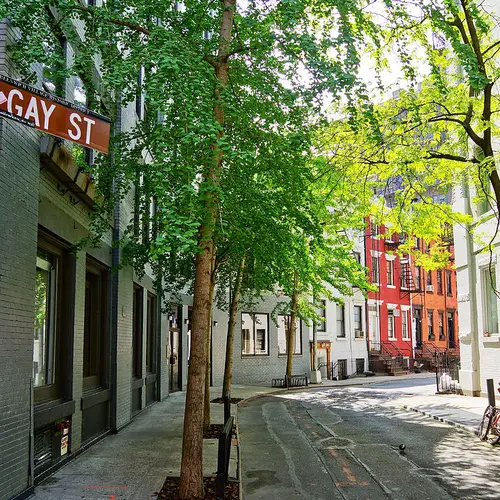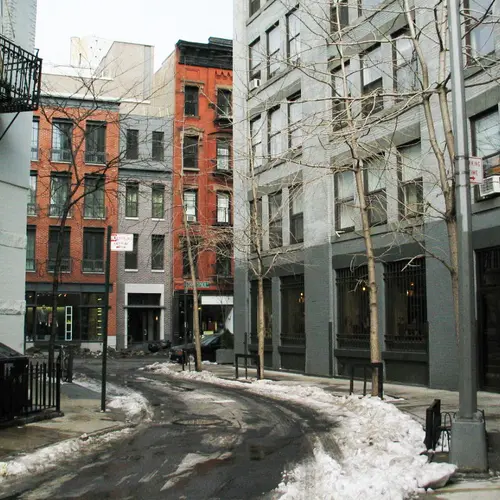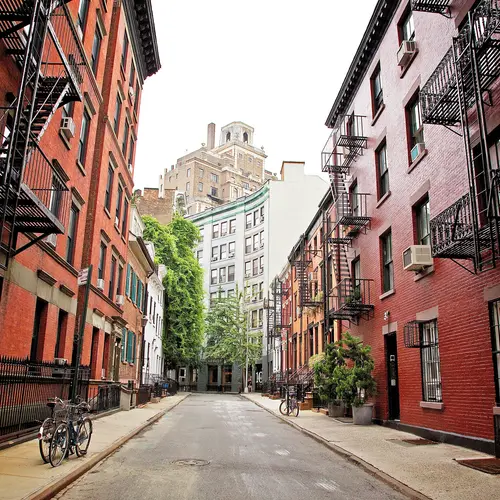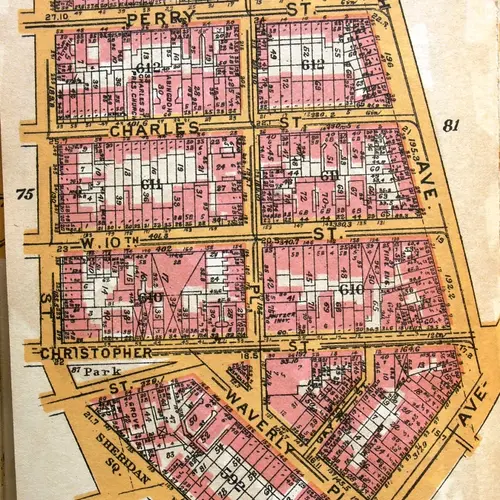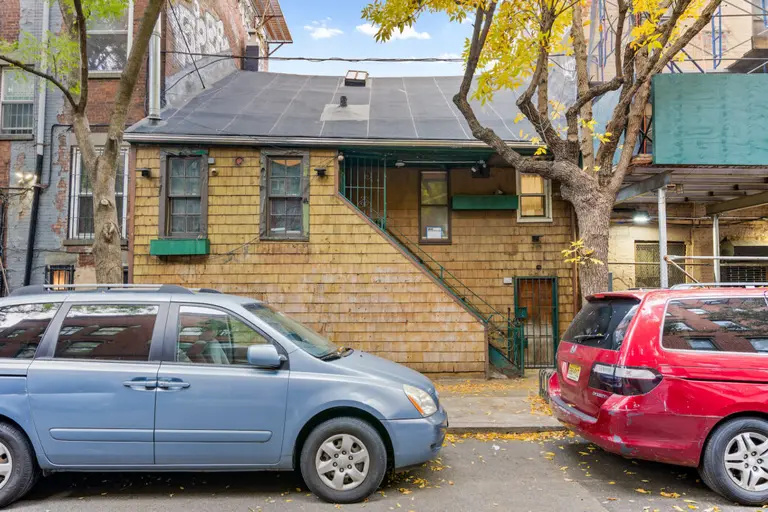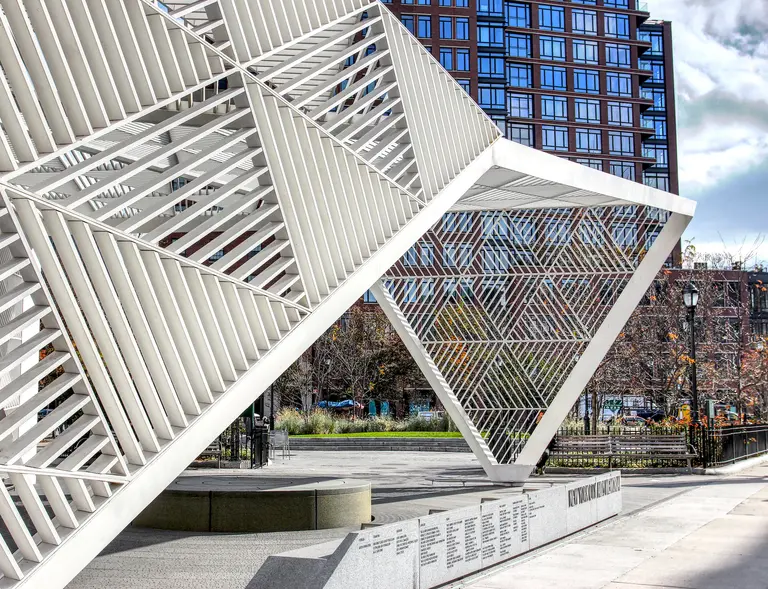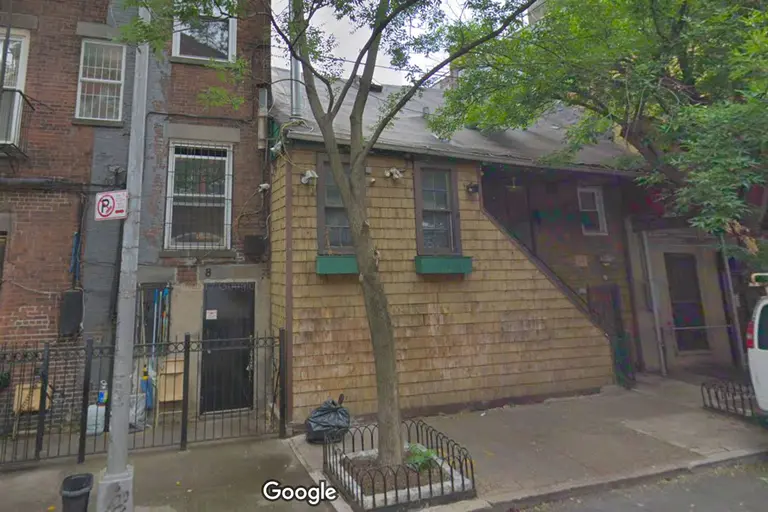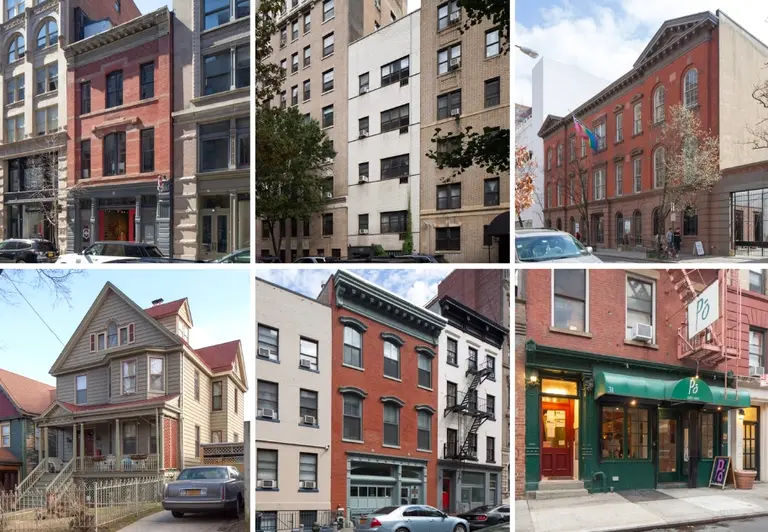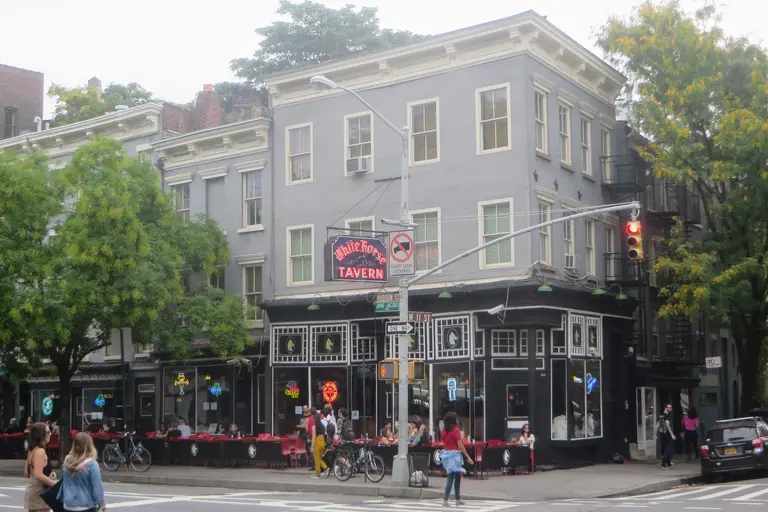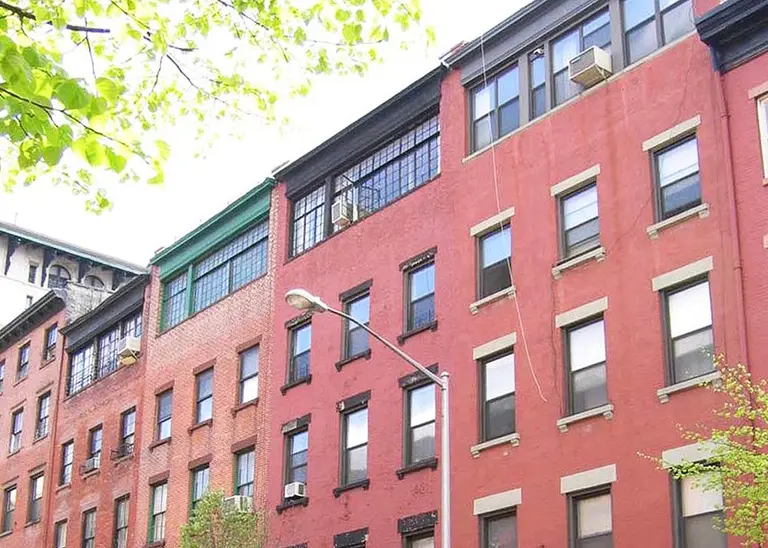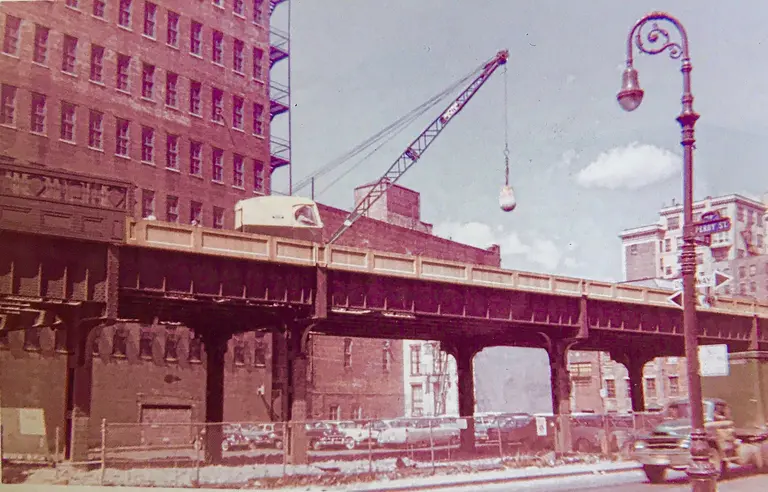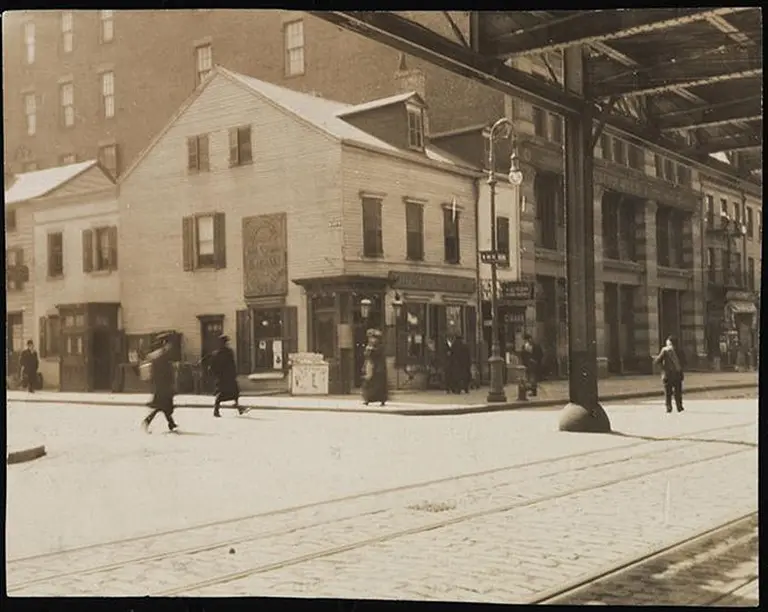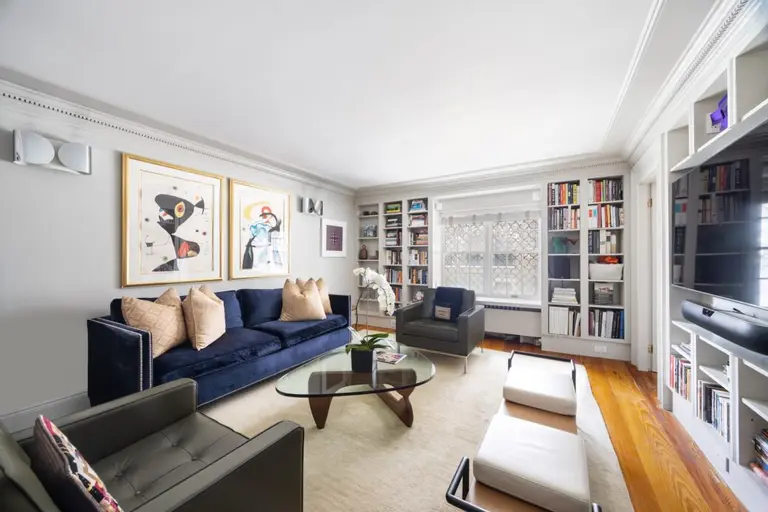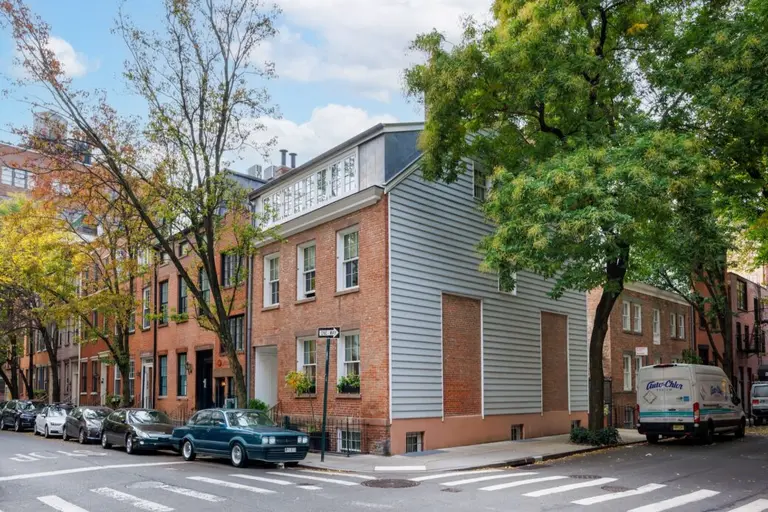What’s in a name? Gay Street

Southward view of Gay Street via Wiki Commons
Gay Street is one of the most charming and picturesque streets in Greenwich Village, an icon of the historic neighborhood’s anachronistic character. But the origins of its name are hotly debated, with the LGBT rights movement and abolitionism often cited as the source of its unusual nomenclature. And while the street certainly has strong connections to gay liberation and the African-American struggle for freedom, the history behind the name is a little murkier, and a little more complicated to unravel, than one might expect.
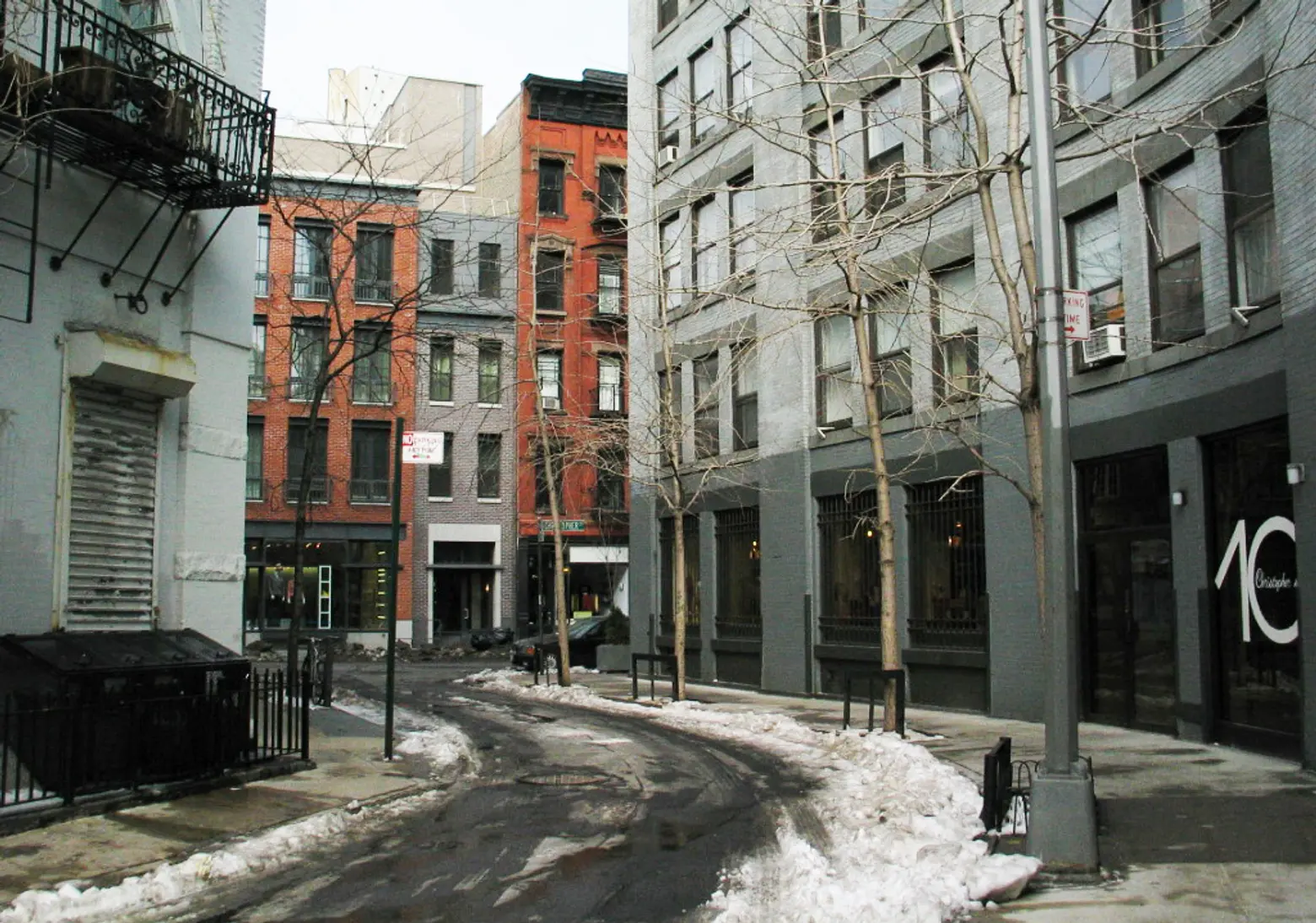 Northward view of Gay Street via Wiki Commons
Northward view of Gay Street via Wiki Commons
Gay street is unique in several respects. It’s one of a handful of one-block-long streets in Manhattan, located just west of the hustle and bustle of Sixth Avenue between Christopher Street and Waverly Place. With a bend at its northern end, you can never really see the street in its entirety. The three- and four-story Federal and Greek Revival-style houses which line much of its length give Gay Street a remarkably intimate feel. The larger converted late-19th-century factories at its northern end add to the street’s remarkable sense of visual isolation by blocking out the more modern apartment buildings to the north.
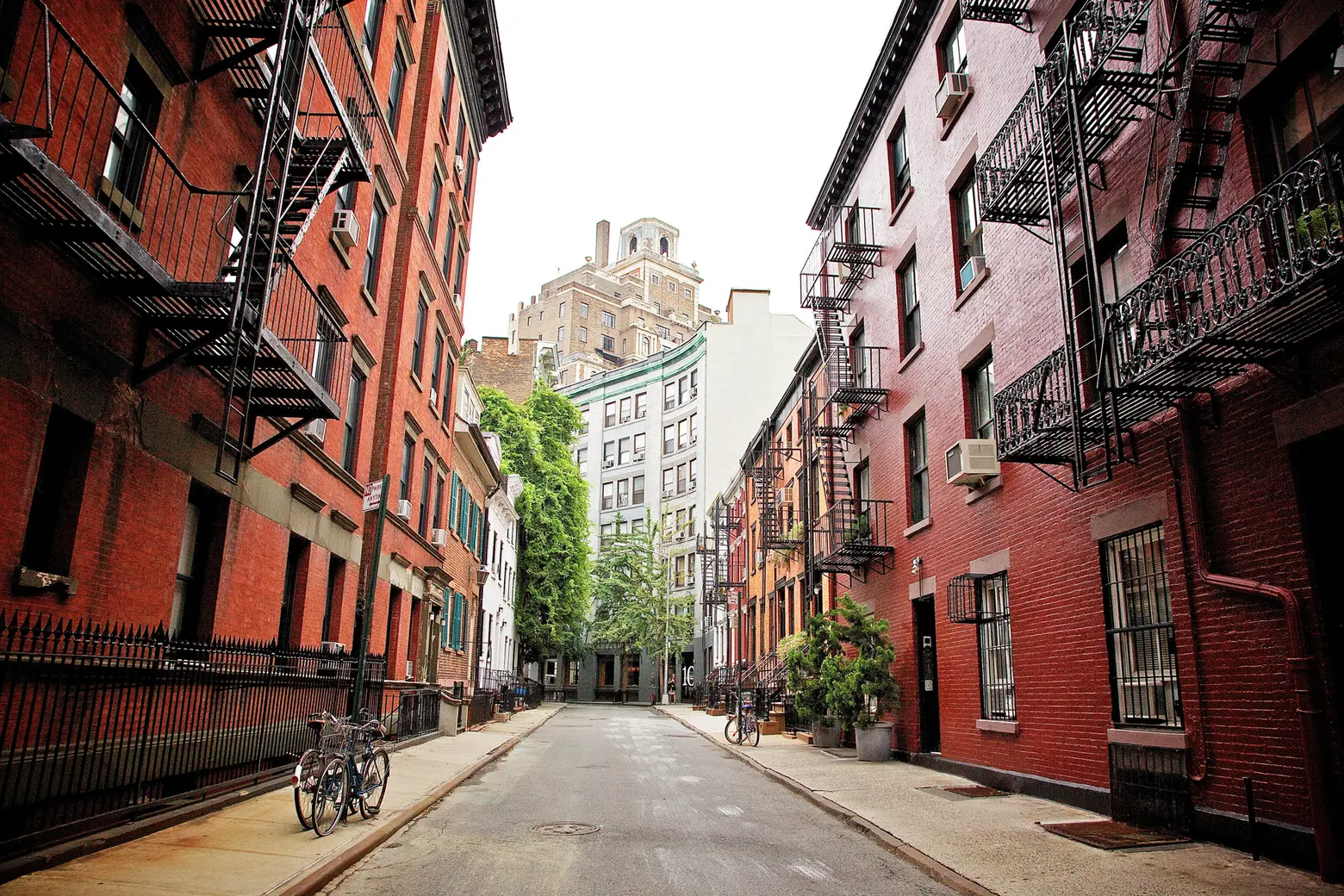
Via Wiki Commons
As narrow as the street is now, it was actually widened on its east side in 1833. That’s why the houses on the west side of the street are in the federal style and date from the late 1820s and early 1830s, while the houses on the east side were built later, in the Greek Revival style, having replaced the older houses demolished during the widening.
In the later 19th century, when the Village was the center of New York’s African-American community, many of the residents of Gay Street were black, and many of them were also musicians. Notable early 20th-century residents included writer Ruth McKenna and her sister Eileen, whose experience living in the basement of #13 was the basis for the book, play, and movie “My Sister Eileen,” and later the Broadway musical “Wonderful Town.”
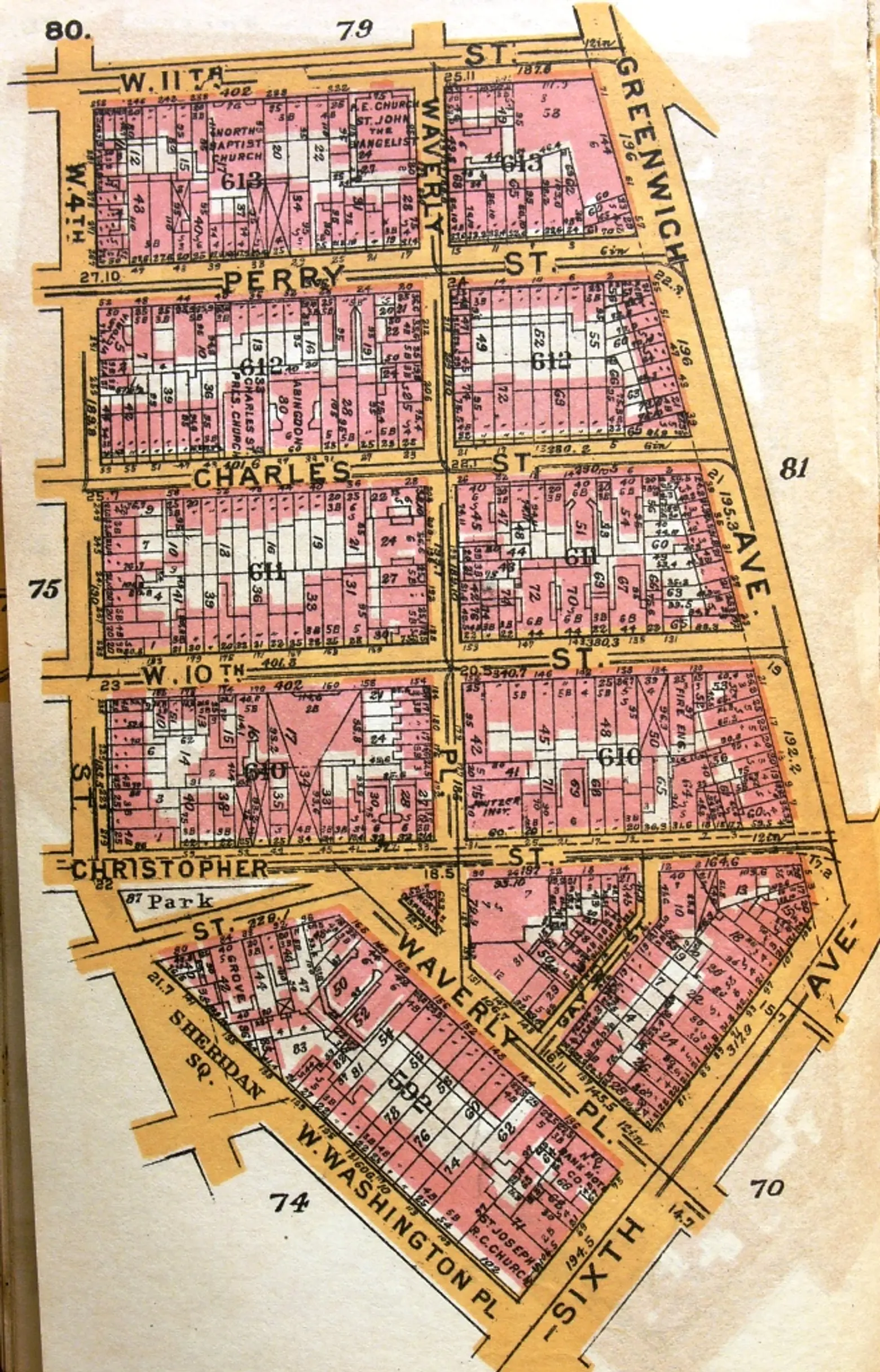
Historic Bromley map of Manhattan showing Gay Street lower right (courtesy of David Jarrett — historic maps available on GVSHP’s website)
But long before Ruth McKenna made Gay Street famous, the street and its Greenwich Village surroundings had already come to be associated with the word “gay.”
In modern parlance, “gay” means attracted to the same sex. But this was not always so, and the word’s evolution, interestingly, mirrors that of Gay Street and its environs.
Gay originally meant carefree, happy, exuberant. However, by the late 19th and especially the early 20th century, the connotations of the word gay came to be increasingly associated with a lifestyle unfettered by the conventions of the day. As time went on, this especially came to mean freedom from sexual conventions.
At this time, the term “gay” was associated with both men and women, many of whom lived in places like Greenwich Village or Paris. They were often habitués of the cafes and clubs of these unconventional communities, typically unmarried, frequently without traditional jobs, seeming not to care what the rest of the world thought about or expected of them. As a result, it was said that they lived the “gay life.”
No doubt some of these iconoclasts were “gay” by today’s definition. But many were not. It was not until the mid-20th century that use of the term “gay” came to more commonly mean specifically those attracted to the same sex, and it was not until the late 20th century that this definition came to eclipse other uses and associations.
Of course, during this same time period, Greenwich Village also evolved from being one of the premier locales for those who were “gay”– as in unfettered by contemporary conventions — to, more specifically, a mecca for those who were “gay” — as in attracted to the same sex. So where in this arc of the evolution of the meaning of the word gay, and of Greenwich Village’s identity, did the name “Gay Street” emerge?
The name appears to date back to at least 1827. According to “The Street Book: An Encyclopedia of Manhattan’s Street Names and Their Origins” by Henry Moscow, the name Gay Street first appears officially in the New York City Common Council minutes in 1827 — when Greenwich Village was first being settled as a suburb of New York by merchants fleeing the yellow fever epidemics downtown. This was long before Greenwich Village had come to acquire any associations with the “gay” life — carefree, same-sex, or otherwise. Thus although the street is just one short block from the Stonewall Inn, the birthplace of the modern LGBT rights movement, that has nothing to do with the origins of the name as is sometimes assumed.
Also apparently having nothing to do with its name is the street’s historic associations with African-Americans. It has often been posited that the street was named for Sidney Howard Gay, editor of the National Anti-Slavery Standard. But Gay was born in 1814, and thus would have been only thirteen years old when the first published reference to “Gay Street” appeared. He also did not become the editor of the National Anti-Slavery Standard until 1843, thus blowing a large hole in this theory.
In fact, the exact origin of the name of Gay Street does not appear to be conclusively established. However, most authorities on the matter believe that it was likely a family name since most (but not all) streets in the area were named for local families. According to Moscow, newspapers from the late 18th century do show at least one man with the surname Gay who lived not far away on the Bowery, who may have been the street’s namesake.
So in spite of the street’s rich connections to LGBT and African-American history, “Gay Street’s” associations with those groups may be nothing more than a coincidence. Of course that would be a coincidence of a particularly charming and improbable nature – not unlike the Village itself.
+++
This post comes from the Greenwich Village Society for Historic Preservation. Since 1980, GVSHP has been the community’s leading advocate for preserving the cultural and architectural heritage of Greenwich Village, the East Village, and Noho, working to prevent inappropriate development, expand landmark protection, and create programming for adults and children that promotes these neighborhoods’ unique historic features. Read more history pieces on their blog Off the Grid.

